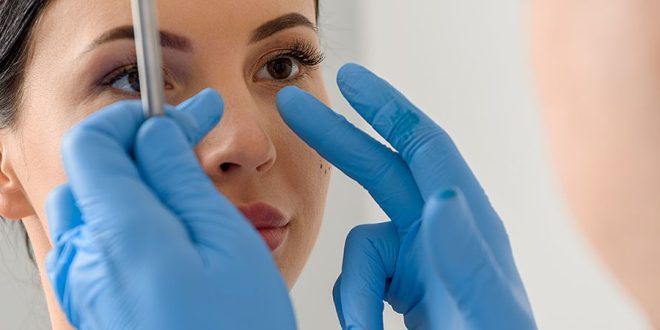Rhinoplasty is the medical term for cosmetic or reconstructive nose surgery. Rhinoplasty is derived from the Latin word Rhino (meaning nose) and the Greek word Plasty (meaning forming or molding).
Also known as nasal refinement or nose job, Rhinoplasty is designed to reduce the nose size, alter the shape of the nose tip.
Nose surgery, as a reconstructive procedure, helps in correcting the asymmetries from trauma or birth by breaking down the bones of the nose and re-setting it to a desired shape.
Not only does Rhinoplasty cater to cosmetic reasons, it is also designed to provide functional benefits ensuring the patients can breathe through both nostrils.
Also Known As: Rhinoplasty
Benefits of a Nose Job
A nose surgery can benefit, over 15 years old and 17 years old respectively.
A nose job can benefit patients with structural defects, which prevents them from proper breathing. These defects are caused by genetic malformations or traumatic injuries.
Rhinoplasty can benefit patients with internal or external deformations of the nose structure. These defects are caused by burning, severe trauma, genetic mutations, cancer and exposure to toxic substances.
Nasal refinement can be a significant cosmetic procedure helping patients to change their physical appearance and facial proportion.
The Rhinoplasty Procedure
General anesthesia is usually administered before a rhinoplasty procedure. Oral medications combined with intravenous medication are given to the patients in order to provide a painless surgery.
The nose surgery will last about one to two hours depending on the complexity of individual cases.
Incisions are made inside the nostril rims or can be placed on the nose rim itself. The soft tissues are separated from the underlying structure. Then, the bone and cartilage responsible for the deformity will be reshaped.
The procedure of the nose job will depend largely on individual cases. For instance, patients with breathing problems are recommended to undergo a septoplasty procedure by removing obstructions, while those with abnormally large noses are advised to reduce the size by fracturing nasal bones.
Rhinoplasty is categorized into two kinds of procedures – closed and open rhinoplasty.
Open rhinoplasty is performed by making an incision across the columella. Although this procedure can provide precise results with small, easily fading scars, the recovery time will be longer and risks of tissue damage may occur. In closed rhinoplasty, on the other hand, external incision is not an option, which allows shorter healing time and prevents disruption of tissues.
Since scars are permanent, a closed nose surgery will hide the scars completely inside the nose. Unfortunately, the open nose surgery technique will leave a scar on the base of the nose in between the nostrils.
Recovery After Nose Surgery Procedure
Immediately after the nose surgery, the patient’s nose may look asymmetrical and crooked. For this reason, plastic splints or nasal packs may be used to maintain the shape of the nose. The split will be removed a week after the nose surgery.
Bruising, swelling, numbness or mild to severe pain is experienced. Ice packs, pain medications and sleeping pills may be prescribed by your doctor.
For faster recovery, a patient should apply cold compress, avoid nasal medications, use saline spray and humidifier, keep the head elevated and avoid nose picking.
A good diet also helps the healing process of nose surgery. A liquid diet with soup, broth, juice and water can help normalize the stomach before resuming to normal eating.
The results of a nose surgery are visible three months after the procedure.
The Results
The results of a nose surgery are permanent. However, due to the normal aging process, your nose will slightly change.
Revisions of the nose are possible since the nose can change in ways that are not predicted before and after the surgery. Revisions can only be done a year after the date of your last nose surgery.
Surgical facility And Cost
The rhinoplasty procedure is performed in a hospital setting or in outpatient surgical facilities. Although you require someone to drive you home, you will be able to go home a few hours after the procedure.
Costs of nose surgery vary depending on location, surgeon, technique used and complexity of the case. The average cost of rhinoplasty ranges from $3,000 to $5,000. These fees do not include operating room facility, anesthesia, hospital stay and other related expenses.
Side Effects, Risks, Complications and Contradictions
After a nose surgery, the patient may experience problems such as bleeding, skin problems, infection, nasal blockage, allergic reactions to anesthesia and internal swelling.
Complications include abnormal shape of nose, airway obstruction, anesthesia reaction, discoloration, internal scarring, loss of smell and structural support, never damage, perforation, permanent numbness, sinusitis, wound infection, blood vessel bursting and visible scarring.
 Lesbian, Gay, Bisexual, Transgender & Intersex News Lesbian News, Gay News, Bisexual News, Transgender News, Intersex News, LGBTI News
Lesbian, Gay, Bisexual, Transgender & Intersex News Lesbian News, Gay News, Bisexual News, Transgender News, Intersex News, LGBTI News




